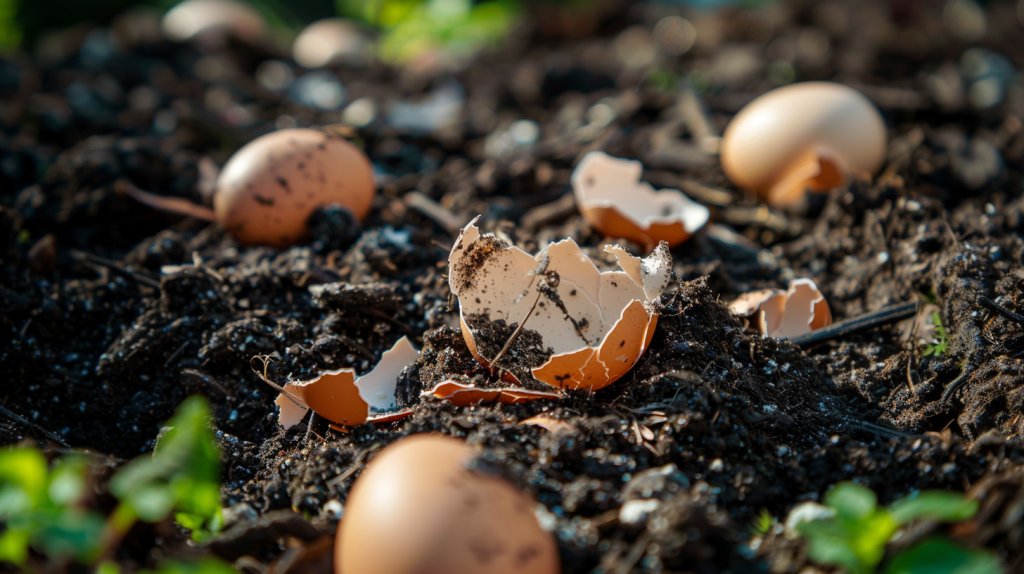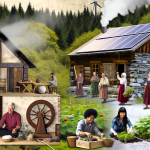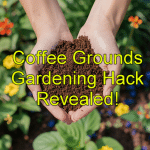Hey there, fellow green thumbs! Did you know that your breakfast leftovers could be the secret weapon for a thriving garden? That’s right—those humble eggshells you’ve been tossing in the trash are actually gold for your plants. So, next time you’re whipping up an omelette or baking a cake, save those shells! Let’s crack into how you can use eggshells to give your garden a natural boost (pun totally intended).
Eggshells: Not Just for Humpty Dumpty
First things first, let’s talk about what makes eggshells so amazing. These fragile white (or brown) wonders are packed with calcium carbonate, which is just a fancy way of saying they’re full of calcium. Calcium is essential for plant growth, helping to strengthen cell walls and prevent common problems like blossom end rot in tomatoes. Think of it as a multivitamin for your garden.
How to Prepare Your Eggshells
Before you start sprinkling eggshells like garden fairy dust, there’s a bit of prep work involved. Don’t worry, it’s super simple!
- Collect and Clean: After you’ve cracked your eggs, give the shells a quick rinse to remove any leftover egg whites. This helps avoid any unwanted critters making themselves at home in your garden.
- Dry: Let the shells dry completely. You can leave them out on a sunny windowsill, or if you’re in a hurry, pop them in the oven on low heat for a few minutes.
- Crush: Once dry, crush the eggshells into small pieces. You can use your hands, a mortar and pestle, or even a rolling pin. The smaller the pieces, the quicker they’ll break down in the soil.
Feeding Your Plants
Now that your eggshells are prepped, it’s time to put them to work. Sprinkle the crushed shells around the base of your plants. As they break down, they’ll release calcium into the soil, giving your plants a steady supply of nutrients. This is particularly beneficial for plants like tomatoes, peppers, and eggplants, which are prone to calcium deficiency.
Eggshells as Pest Repellent
Eggshells aren’t just great for feeding your plants; they also double as a natural pest repellent. Slugs and snails, the slimy nemeses of every gardener, hate crawling over the sharp edges of crushed eggshells. It’s like trying to walk on a bed of nails. Sprinkle a ring of crushed shells around the base of your plants to create a barrier those pesky critters won’t want to cross.
Eggshell Tea: Not Just for Breakfast
If you want to give your plants an extra calcium boost, try making eggshell tea. Here’s how:
- Boil: Place a handful of crushed eggshells in a pot of water and bring it to a boil.
- Steep: Turn off the heat and let the shells steep in the water overnight.
- Strain and Water: Strain the shells out and use the calcium-rich water to nourish your plants.
A Few Eggshell Cautions
While eggshells are fantastic, there are a couple of things to keep in mind:
- Moderation: Don’t go overboard. A little goes a long way. Too much calcium can raise the soil pH, which might not be ideal for all plants.
- Cleanliness: Make sure your shells are clean and dry to avoid any potential salmonella risk.
Crack on and Get Gardening!
So, there you have it—eggshells are a simple, cost-effective way to boost your garden’s health. Plus, you’re reducing waste and getting the most out of your breakfast. It’s a win-win! Next time you’re enjoying a sunny-side-up or scrambling some eggs, remember that those shells are more than just kitchen waste. They’re your garden’s new best friend.
Go on, give it a try. Your plants will thank you, and you’ll have the most egg-cellent garden on the block! Happy gardening, folks!




GIPHY App Key not set. Please check settings